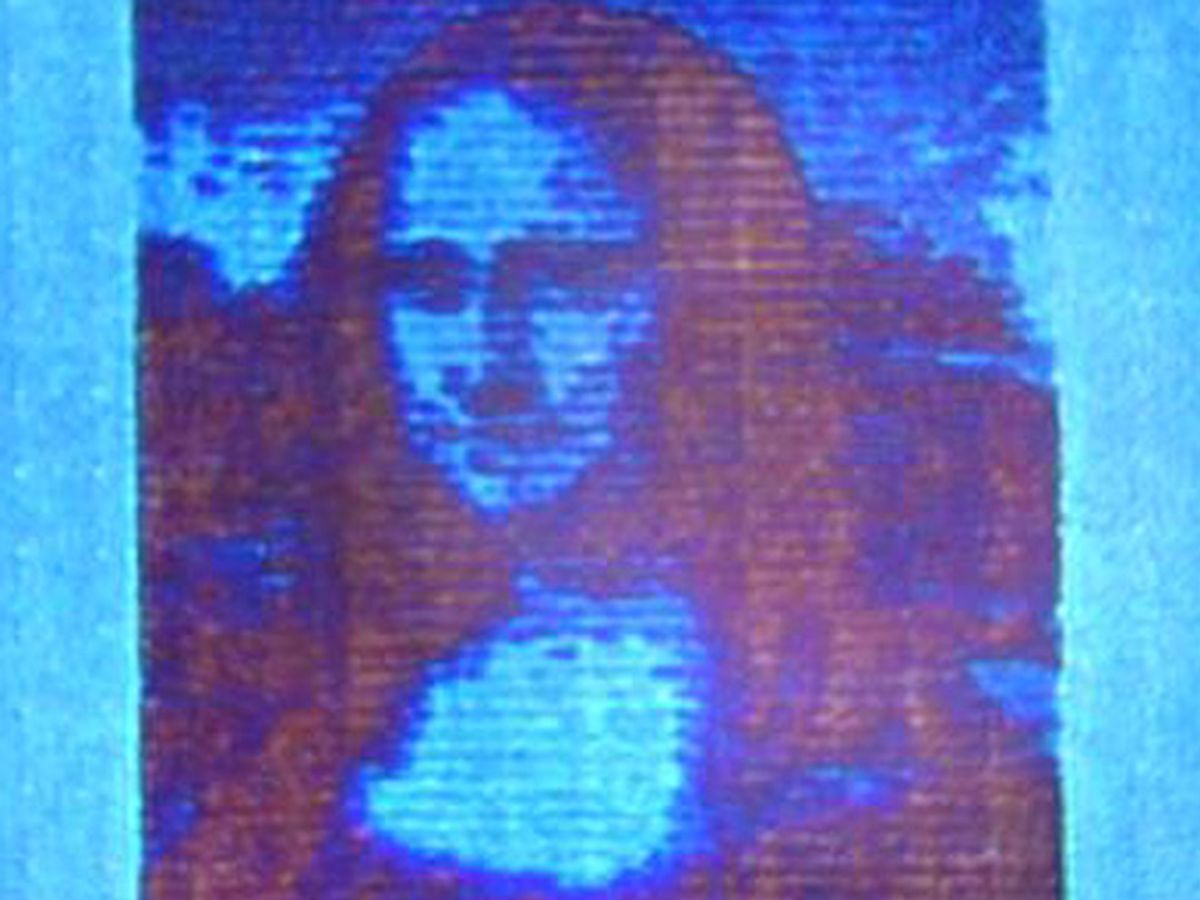The field of plasmonics has offered some pretty exciting technologies over the past few years, including improved photovoltaics, LEDs, and a host of other optoelectronic applications—most notably photonic circuits that duplicate what electronic ICs can do.
Now researchers at the Technical University of Denmark (DTU) have leveraged plasmonics in a way that may completely revolutionize laser printing by creating a laser printer capable of producing images with 120,000 dots-per-inch resolution. Just to demonstrate how revolutionary the technology is, the DTU researchers reproduced a color image of the Mona Lisa in a space smaller than the footprint taken up by a single pixel on an iPhone Retina display.
In the research, which was published in the journal Nature Nanotechnology, the Denmark researchers were able to achieve this remarkable resolution using plasmonic nanostructures in place of dyes. However, the researchers added a bit of a twist to traditional techniques for doing this that could make the process far more scalable.
Instead of using methods such as e-beam lithography (EBL) or focused ion beam (FIB), neither of which can be scaled to pre-design and print the plasmonic nanostructures, the researchers went with a process known as laser post-writing. The process starts with a surface that has been prepped by adding rows and columns of nanoscale structures, each with a diameter of 100 nanometers. This nanostructured surface is then covered by a 20-nm-thick sheet of aluminum. At this point, the laser post-writing is introduced. A laser pulse is aimed at each column, heating it up locally and causing it to melt and deform.
The intensity of the laser pulse determines the level of deformation, and consequently, the colors that the column reflects. A low-intensity laser pulse causes little deformation; the colors of blue and purple are reflected. When the laser pulses are more intense and the deformation more extreme, the deformed structure reflects orange and yellow colors.
“Every time you make a slight change to the column geometry, you change the way it absorbs light,” explained N. Asger Mortensen, a professor at DTU, in a press release. “The light which is not absorbed is the color that our eyes see. If the column absorbs all the blue light, for example, the red light will remain, making the surface appear red.”
While printing images of the Mona Lisa on a single pixel may not seem like a practical use of the technology, it could be useful in applications where presenting images that are undetectable by the naked eye could be quite valuable.
“It will be possible to save data invisible to the naked eye,” said Anders Kristensen, a DTU professor, in a press release. “This includes serial numbers or bar codes of products and other information. The technology can also be used to combat fraud and forgery, as the products will be labeled in way that makes them very difficult to reproduce. It will be easier to determine whether the product is an original or a copy.”
Dexter Johnson is a contributing editor at IEEE Spectrum, with a focus on nanotechnology.



